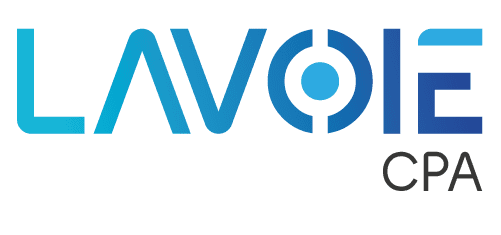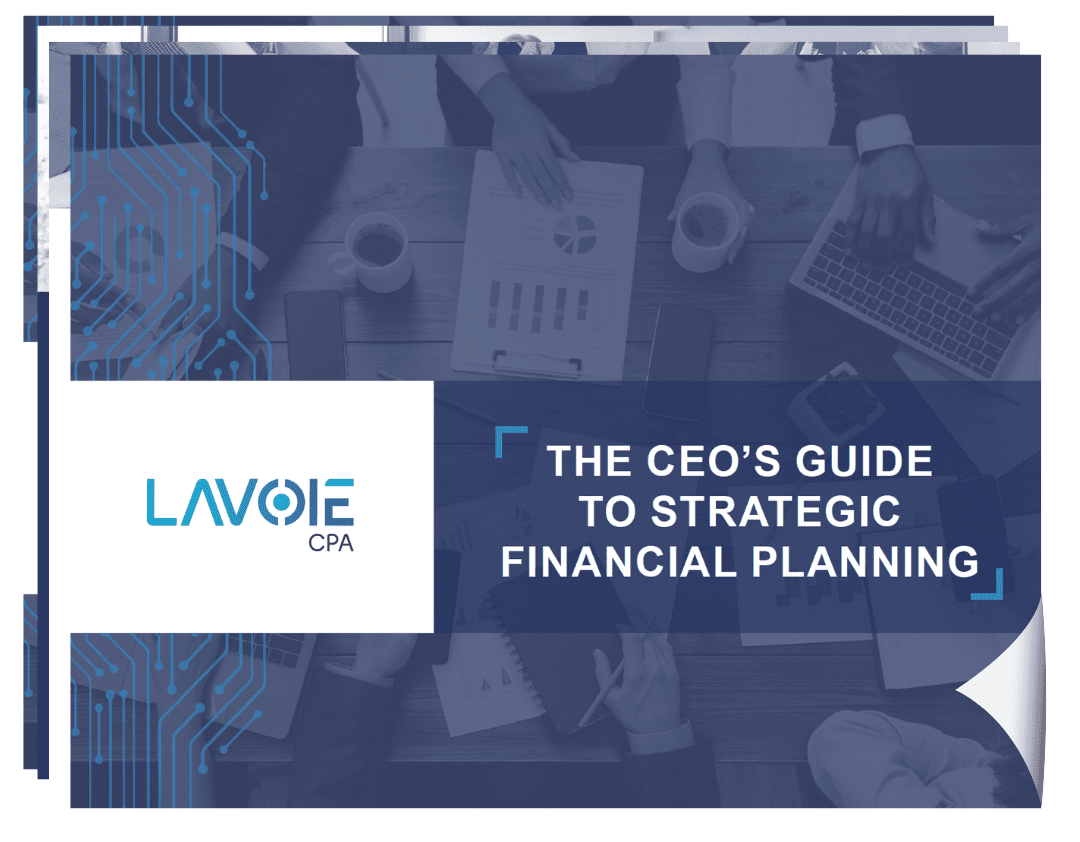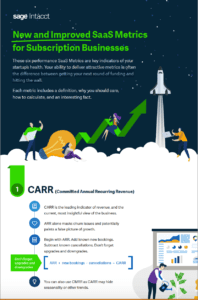
by Sharai Lavoie | Dec 4, 2024 | Blog
The way healthcare keeps financial score is being transformed by technology and by data-driven approaches to decision-making. Financial dashboards are increasingly important to healthcare organizations as they look to improve efficiency, optimize the allocation of resources, and enhance patient care. These tools help healthcare professionals make informed decisions based on real-time data, which transforms the managing and monitoring of financial performance/
Understanding Financial Dashboards in Healthcare
Financial dashboards are visual tools that consolidate and display key financial data to give a comprehensive overview of an organization’s financial health. The main purpose of these dashboards is to aid informed decision-making by presenting complex data in an easily digestible format.
Key Components of Effective Healthcare Financial Dashboards
- Revenue Metrics: This includes revenue per bed, clinician, and treatment.
- Operational Metrics: Metrics like patients served, encounters, and clinician count.
- Profitability Metrics: Profit and loss by location and budget comparisons.
- Industry-Specific Metrics: These can include claim denial rates and average length of stay.
The Shift from Historical Reporting to Real-Time Insights
Healthcare accounting and financial management has traditionally relied on historical data to make decisions. But with real-time insights, organizations can now monitor financial performance as it happens, allowing for more proactive and agile management. You no longer need to wait until the end of a reporting period to make strategic planning decisions—every day, you have at your fingertips all the information you need to see trends and start pivoting.
Essential KPIs for Healthcare Financial Dashboards
Healthcare financial KPIs are the bread and butter of dashboards. Tracking different revenue, operational, and profitability metrics can allow you to see a three-dimensional view of your organization at any time.
Revenue Metrics
- Revenue per Bed: This tracks the income each bed generates, helping optimize bed utilization.
- Revenue per Clinician: This measures the financial contribution of each healthcare provider.
- Revenue per Treatment: This assesses the profitability of different treatments and services.
Operational Metrics
- Patients Served: This monitors the number of patients treated, highlighting trends and capacity.
- Encounters: This tracks patient interactions to gauge workload and resource allocation.
- Clinician Count: This measures staffing levels to ensure adequate patient care and operational efficiency.
Profitability Metrics
- P&L by Location: This analyzes profit and loss across different locations to identify performance variations.
- Budget Comparisons: This compares actual spending against budgeted amounts to control costs and improve financial planning.
Industry-Specific Metrics
- Claim Denial Rates: This tracks the percentage of denied insurance claims, helping to identify billing issues and improve reimbursement processes.
- Average Length of Stay: This monitors patient stay duration to optimize bed turnover and improve patient flow.
The Impact of Real-Time Data on Decision Making
Enhancing Forecasting and Budgeting Accuracy
Real-time data has revolutionized the way healthcare organizations approach forecasting and budgeting. These processes traditionally relied on historical data, which often failed to reflect current trends or sudden changes in the healthcare environment.
The COVID-19 pandemic is a prime example of these suddenly-changing conditions. Nearly overnight, healthcare providers had to instantly react and adapt to shifting federal and state regulations and new guidelines on caring for COVID patients. Data dashboards give up-to-the-minute information that can enhance accuracy in several ways:
- Immediate Access to Current Financial Information: Healthcare organizations can access the latest financial metrics. This ensures their forecasting models and budgets are based on the most current available information.
- Improved Resource Allocation: Understanding the current financial status and anticipated future needs lets organizations allocate resources more effectively.
- Dynamic Budget Adjustments: Real-time data allows continuous budget monitoring. This lets healthcare managers make necessary adjustments to stay on track financially.
Identifying Trends and Patterns for Proactive Management
Being able to analyze real-time data helps healthcare organizations identify trends and patterns that may not be apparent with delayed or historical data. When historical data is aggregated and seen in a snapshot view, you can easily lose sight of day-to-day trends.
Up-to-the-minute data analysis can highlight emerging financial issues before they become significant problems. This allows for early intervention that might not otherwise be possible.
Meanwhile, continuous monitoring lets healthcare organizations identify long-term trends that inform strategic decision-making. This can often include changes in patient volume, service demand, and revenue cycles.
And finally, data lets organizations benchmark their performance against internal goals and industry standards on a rolling basis. Again, periodic snapshots in time aren’t the most helpful when it comes to strategic planning. By constantly evaluating an organization’s performance, managers help it remain competitive and efficient.
Facilitating Quick Responses to Financial Challenges
Real-time insights are crucial for healthcare managers who must quickly respond to financial challenges. Whether it’s a sudden drop in revenue, unexpected expenses, or changes in regulatory requirements, real-time data gives the information needed to act quickly.
But real-time data doesn’t just help with challenges; it also highlights opportunities. For instance, recognizing a surge in demand for specific services can help you immediately capitalize on this trend by reallocating resources or adjusting service offerings. And if or when you see this trend start to reverse, you can retool your approach.
Customization and Accessibility of Financial Dashboards
Financial dashboards can be customized to give different stakeholders targeted insights. This helps ensure that everyone—from executives to managers to clinicians—can access the information they need. The most effective financial dashboards integrate seamlessly with other healthcare systems and data sources to give a holistic view of an organization’s financial health.
With mobile accessibility, financial dashboards enable on-the-go decision-making, letting healthcare professionals stay informed and responsive no matter where they are.
Case Studies: Success Stories of Healthcare Organizations
Improving Operational Efficiency
Sage Intacct helped one healthcare organization reduce its monthly close from 15 days to 4 days. This organization, which provides on-site primary care and health coaching, used a reporting dashboard to analyze its operating costs by number of eligible lives per clinic, as well as how many medical supplies were being used per visit. This helped the organization get a better handle on how much to charge patients. It also allows it to determine which clinics are operating most efficiently. Learn more at Sage’s blog.
Enhancing Financial Performance
A California orthopedic clinic grew by 25%—without adding to its finance headcount—by incorporating operational data into its reporting process. Sage Intacct also helped it streamline its finance workflows to free 50 hours per month.
As the practice’s CFO explained, “the system’s deep insights help us know if we’re on track or not and make changes very nimbly. I get the reporting I need to efficiently redirect the ship.” Learn more about how Sage Intacct helped this practice turn its financial model from 2D to 3D.
Implementing Effective Financial Dashboards
Like any tool, a financial dashboard is at its most effective when it’s designed with the user in mind. If the dashboard doesn’t track the measures you want to see or is confusing or difficult to navigate, it’s not the best tool for you. Platforms like Sage Intacct offer robust features tailored to healthcare financial management and can be nearly endlessly customized to the user experience.
It’s also crucial to train your healthcare teams on the most effective use of these dashboards. Comprehensive training programs and ongoing support can make for a smoother transition. At Lavoie CPA, not only can we optimize Sage Intacct to suit your individual needs and goals, but we can also provide direct support throughout the process.
The Future of Financial Dashboards in Healthcare
As the healthcare industry shifts towards value-based care, financial dashboards will play a key role in tracking performance metrics and ensuring sustainable, patient-centered care. What’s more, technologies like AI, blockchain, and predictive analytics will continue to offer deeper insights and enhanced security.
You need to stay ahead of regulatory changes to consistently comply with them. Fortunately, financial dashboards can help healthcare organizations monitor and adapt to new regulations in the most efficient way possible. Instead of relying on manual research and employee memory to ensure you’re complying with relevant federal and state guidelines, you’ll be able to program these guidelines into your dashboard and see how you’re performing.
Conclusion
Financial dashboards have become an indispensable tool in modern healthcare financial management. Organizations that leverage the power of these dashboards can enhance their existing operations, optimize cost structures, and improve their financial performance. But it’s more than moving ahead—it’s about not being left behind. Healthcare providers must embrace and invest in advanced financial dashboard technology to stay competitive and provide the best outcomes for their patients and stakeholders.
Ready to take your healthcare financial management to the next level? Learn more about how Lavoie CPA can empower your organization’s decision-making with Sage Intacct—contact us today to start the conversation.

by Sharai Lavoie | Feb 16, 2021 | Accounting, Blog, Budgeting, Business Intelligence, CFO, Community, Competitive Advantage, CPA, Entrepreneurs, Finance, Financial Services, Growth, Lavoie, Planning, Services, Small Business
Developing a strategic financial plan can seem daunting; however, it can be boiled down into two questions: what are you doing now and where do you want to be? This article walks you through the process of answering these two questions, providing a foundation for developing a financial strategy for your organization.
Question 1: What Are You Doing Now?
Every journey has a starting point and an ending point. Before you can implement a plan to achieve your financial goals, it is important to consider where you are now.
Current State of the Numbers
The current state of your organization’s numbers are a good starting point when determining your organization’s capability to meet its financial goals. Some important questions to ask include:
- Are you in a position of stability? Financial stability is vital to reaching “stretch” goals. If the organization is not currently financially stable, it is important to identify this fact and develop a strategy for achieving stability as a first step in the planning process.
- What is actually coming in/out the door? Knowing the size of the company’s cash reserves is not enough for financial planning. How much revenue is coming into the organization and how much is going out again as expenses?
- What is fueling the majority of your expenses? While increasing sales is one way of improving the organization’s financial footing, the ability to do so depends on the market and potential customers. Identifying and minimizing expenses increases profits as well but is less impacted by external factors.
Culture
Achieving financial goals requires the support of the entire organization. Take a moment to consider your organization’s culture and if the company has the maturity and ability to meet its goals.
- Do your decisions match your vision and mission? An organization’s goals and procedures are important, but actions are even more so. Are your decisions, both recent and historical, helping to move the organization towards its goals?
- Would your employees agree? Employees throughout the organization can have different perspectives, insights, and recommendations. Ask those “down in the weeds” how well the company is following its vision and mission and how they believe things could do better.
Question 2: Where Do You Want To Be?
The effectiveness of a strategic plan can only be effectively measured if there are usable metrics. Before starting to build a plan to improve the organization’s financial position, it is necessary to define success and failure.
Targets
The first step in defining “success” for a financial strategy is defining concrete targets. From there, the next question to ask is what do you need to achieve your targets?
- Human Capital. Does your organization have the human capital necessary to achieve its goals? This not only includes headcount but access to the specific skill sets required now and in the future.
- Acquisitions. Does your organization have the capabilities that it requires? Are there areas of your business where things could be done more effectively or efficiently?
- IT Investments. The IT landscape is evolving rapidly, and new solutions have the potential to dramatically improve operational efficiency and effectiveness. Are there any IT investments that the organization should make that would help in reaching its targets?
Expenses
A failure to properly monitor and manage expenses is one of the most common ways that businesses fail to achieve their financial goals. Gaining visibility into past, present, and future expenditures is an essential part of financial planning.
- How can you gain more visibility into your expenditures? Visibility into expenditures is essential to identifying opportunities for optimizations and cost cutting. How can you achieve a higher level of visibility into business operations?
- Do you have an idea of your cash flow on a daily, weekly, and monthly basis? What level of visibility do you currently have into your organization’s cash flows? Examining cash flows at the daily, weekly, and monthly level can help to identify potential inefficiencies and opportunities.
Beginning Your Strategic Financial Plan
Answering the questions that were asked in this article enables you to lay the groundwork for developing your organization’s financial strategy. To learn about the next steps in your financial planning process, download the CEO’s Guide to Strategic Financial Planning.
![Sage Intacct’s 6 Key Performance Metrics For Subscription Businesses [INFOGRAPHIC]](data:image/svg+xml;base64,PHN2ZyB3aWR0aD0iMSIgaGVpZ2h0PSIxIiB4bWxucz0iaHR0cDovL3d3dy53My5vcmcvMjAwMC9zdmciPjwvc3ZnPg==)
by Tara Fusco | Oct 29, 2020 | Accounting, Analytics, Blog, Budgeting, Business Intelligence, CFO, CPA, Entrepreneurs, Growth, Intacct, Planning, SaaS, SMBs, Software, Startups, Technology
How Healthy Is Your SaaS Business? These 6 Metrics Will Help You Figure That Out
As a Sage Intacct certified accounting and implementation firm, Lavoie CPA is excited to share the latest findings for SaaS businesses to become successful in 2021.
From startups to organizations ready to scale each one of these indicators is an invaluable piece of information to evaluate your company’s overall health — not to mention prep you for that looming board meeting in the near future.
In this infographic we will dive into why each of these metrics is the difference between getting your next round of funding, scaling year over year, or hitting the wall.
Get the infographic and learn why you should care, how to calculate, and an interesting fact about the following KPIs:
- CARR (Committed Annual Recurring Revenue)
- CAC (Customer Acquisition Cost)
- CLTV (Customer Lifetime Value)
- Churn
- Free Cash Flow
- CCS (Cash Conversion Score)


by Tara Fusco | Sep 22, 2020 | Blog, CFO, Community, Corporate Social Responsibility, Entrepreneurs, Growth, Mentor, Planning, SMBs, Software, Startups, Technology
As the election season draws closer and the concerns of small businesses continue to grow in the wake of the pandemic, SMB’s are joining forces to make sure their voices are heard in congress. According to a Goldman Sachs survey released on September 8, 88% of small business owners have exhausted their PPP loan funding; with 43% of Black small business owners depleting their cash reserves by the end of the year.
To help amplify US small business needs, Goldman Sachs is using its 10,000 Small Businesses (10KSB) Initiative to serve as a policy platform and community resource center. However, prior to the COVID-19 crisis, the 10KSB alumni collectively represented $12 billion in revenues and employed 175,000 people. More notably, 44% of these businesses are family-owned and 66% are minority and women-owned businesses.
“The 10,000 Small Businesses Voices initiative is designed to help small business owners in the United States advocate for policy changes that will help their businesses, their employees, and their communities,” according to Goldmansachs.com. “We provide the 10,000 Small Businesses Voices community with the tools, resources, and training needed to make their voices heard and drive tangible impact against real issues.”
Among the many tools to assist small businesses, the program includes surveys, open letters to congress, and ongoing virtual events to help guide owners through ongoing challenges and the most recent policy changes.
One of these events was the Virtual Capitol Hill Day held on June 9th -11th. Over three days, 2,100 small business owners connected with Members of Congress through 434 online meetings across all 50 states, Washington D.C. and Puerto Rico. Lavoie CEO, Sharai Lavoie, was named a NC Hill Week Captain and lead discussions with congressional leaders and small businesses across the state.
Lavoie led three discussions one of which was with Congresswoman Alma Adams, representing North Carolina’s 12th District. Discussion topics included:
“I was thrilled to participate in this initiative,” says Lavoie CEO, Sharai Lavoie. “It’s programs like these that will give SMBs a fighting chance and help promote policies that positively impact the everyday American business owner.”
To learn more about the 10,000 Small Business Voice initiative, check out the website to access resources or participate in the many surveys to inform congress of US business owners’ ongoing needs.

by Tara Fusco | Aug 31, 2020 | Blog, CFO, Community, Corporate Social Responsibility, Entrepreneurs, Growth, Mentor, Planning, SMBs, Software, Startups, Technology
Charlotte Business Leader Sharai Lavoie joins Jerrold Kinney, De’Marcus Miller, and DeAndrae Watson for a discussion on race and the role the sports industry can play in creating positive change within the business community. This captivating conversation explores systemic racism and the vital dialogue that should exist between equality advocates and business leaders.
Watch the full video below, and check out a few of the highlights!

Key Takeaways
Simply put, we as a society are at the crossroads of cultural advancement and organizational ineptitude. The topic of systemic racism, workplace inequality, and homogenous decision-making can no longer be ignored. However, the definition of the “talk” changes from colleague to colleague as do the continuous actions that need to follow.
Over the years, sports professionals have championed those difficult conversations (“talks”) and been at the nexus of sustainable change and political progress. And now, with unparalleled access to recorded footage of police brutality and the confluence of back-to-back violence on black men and women, professionals and companies have an obligation to drive national momentum and activate the diversity conversation.
Here are some very real tips on how to move the equality needle from our Race Talks in Sports panelists:
Are you an athlete or a professional in the sports industry? Here’s how you can influence or participate in sustainable change:
- Continue to be active in your communities… every day
- Have your beliefs front and center… literally wear them where the cameras will see
- Always participate in the conversation… no matter where you are
- Get over your anxiety and fears surrounding communication… no matter what environment you’re in, someone can learn from your experiences
- Bring your full, authentic self to the workplace… the court, the field, or the office
A company’s commitment to diversity
How to do more than just check the box
Unfortunately, most organizations check the diversity and inclusion box by creating an internal group, announcing it on social media, and that’s it. Committing to diversity means providing your employees the opportunity to be mentored and propelled into their desired industry or professional stature. Companies need to rethink how they can use these diversity and inclusion groups to present goals to leadership, and, over time, show what has actually been accomplished. This allows for true accountability and a way to track how quickly programs are progressing and identify ways to continuously improve.
Start improving your diversity and inclusion initiative by focusing on these 5 areas:
- Evaluate Your Organization & Find The Right Skills That Can Lead Change
- Build A Community With Accessible Communication Channels & Resources
- Educate Everyone In The Company From Leadership to Interns
- Create Transparent Goals That Can Be Shared & Tracked
- Drive Accountability That Can Be Analyzed On A Consistent Basis
Ways to Get Involved
Join the Charlotte Sports + Business Networking Group
Charlotte Sports+Business is a free networking group connecting sports industry executives in the Queen City.
Join the Racial Equity Institute
A Greensboro based organization, the Racial Equality, Institute helps individuals and organizations develop the tools they need to challenge patterns and grow equity within their communities.
Watch Uncomfortable Conversations With A Black Man
Emmanuel Acho sits down to have an “uncomfortable conversation” with white America in order to educate and inform on racism, system racism, social injustice, rioting & the hurt African Americans are feeling today.
Moderator
Sharai Lavoie
CEO
Lavoie CPA
Participants
DeAndrae Watson
Vice President
Octagon
De’Marcus Miller
Senior Marketer
Jerrold Kinney
Senior Marketing & Strategy Professional




![Sage Intacct’s 6 Key Performance Metrics For Subscription Businesses [INFOGRAPHIC]](https://lavoiepllc.com/wp-content/uploads/2020/10/Sage_BlogHeader-1080x482.png)



